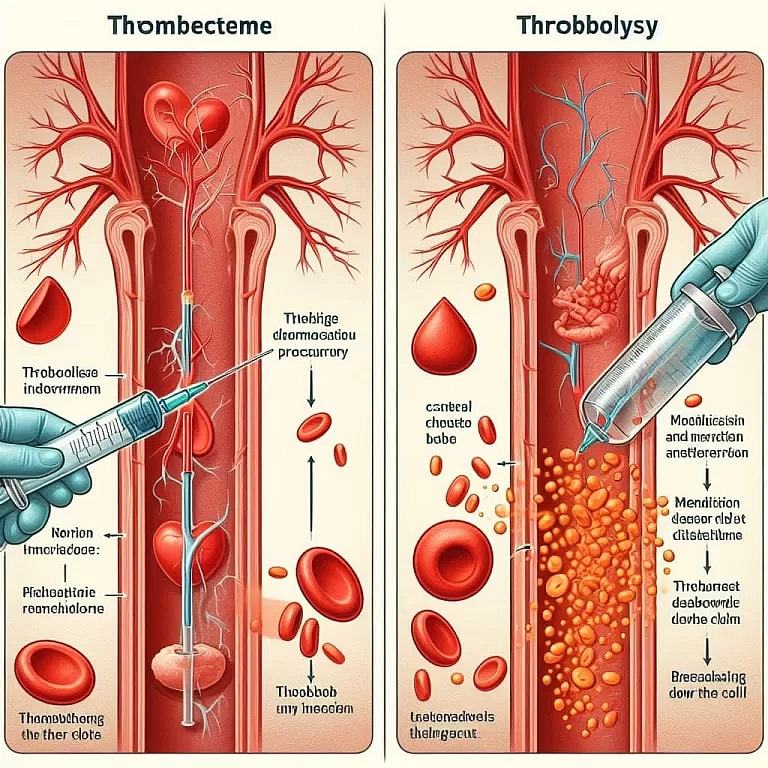Embolic Stroke
**Embolic Stroke: A Comprehensive Overview**
An embolic stroke occurs when a blood clot forms in a far-off artery and travels through the blood to block an artery in the brain. This blockage prevents blood and oxygen from reaching brain tissue, causing damage and potential disability.
**Symptoms of Embolic Stroke:**
– Sudden weakness or paralysis on one side of the body
– Difficulty speaking or understanding speech
– Vision problems in one or both eyes
– Dizziness or loss of balance
– Severe headache without a known cause
**Causes of Embolic Stroke:**
– Atrial fibrillation (AFib)
– Blood clots in the heart (thrombus)
– Aortic atheroma
– Carotid artery stenosis
– Hypercoagulable disorders
– Sleep apnea
**Risk Factors:**
– Age over 65
– Smoking
– High blood pressure
– Diabetes
– Obesity
– History of stroke or heart disease
**Treatment for Embolic Stroke:**
Prompt medical attention is crucial. Treatments aim to remove the clot and restore blood flow to the brain. Common treatments include:
– Thrombolytic medications (clot busters)
– Endovascular therapy (mechanical clot removal)
– Stenting or angioplasty (to clear narrowed arteries)
**Prevention of Embolic Stroke:**
– Manage underlying risk factors (e.g., blood pressure, AFib, cholesterol)
– Take anticoagulants (blood thinners) as prescribed
– Maintain a healthy lifestyle (exercise, balanced diet)
– Consider surgery/intervention for carotid artery stenosis or aortic atheroma
– Monitor and treat sleep apnea
Thrombectomy and Thrombolysis: Understanding Stroke Treatment Options

Thrombectomy and thrombolysis are two medical procedures doctors use to treat blood clots. The one you need will depend on your circumstances. Aleksandr Zyablitskiy/Getty Images The primary difference between the two treatments is that thrombectomy involves surgically removing a blood…
